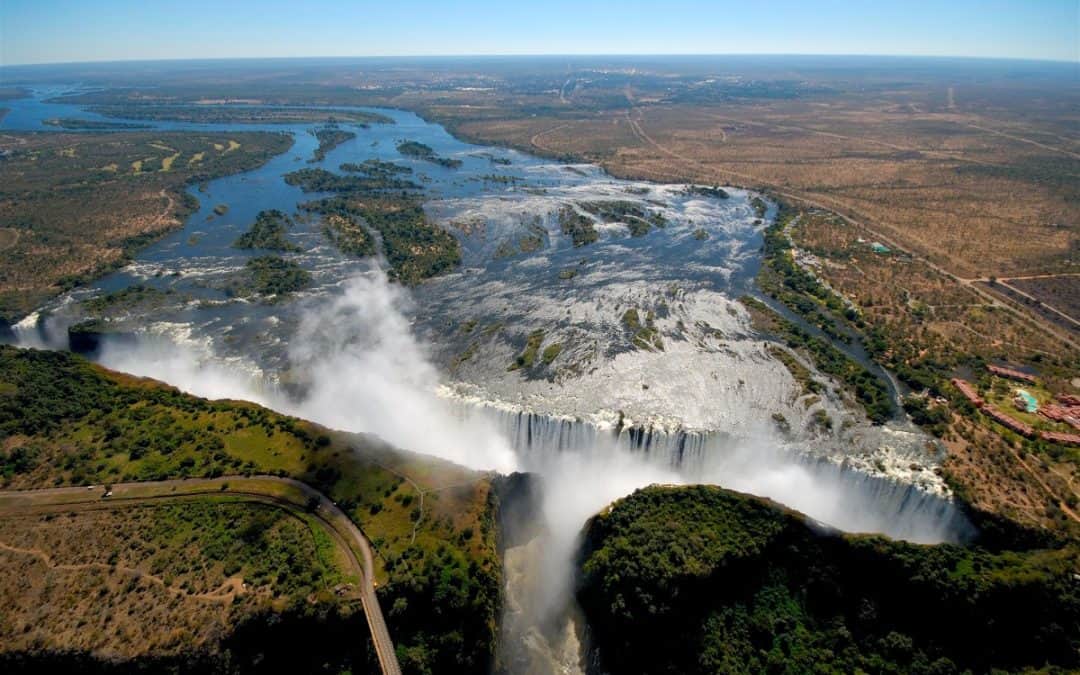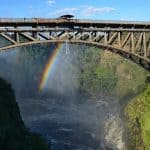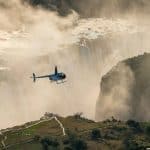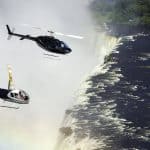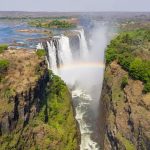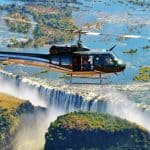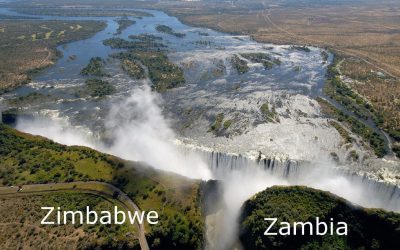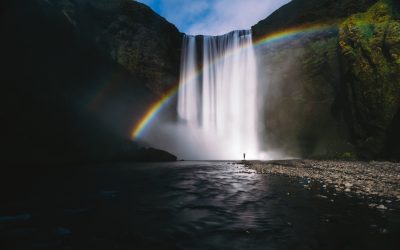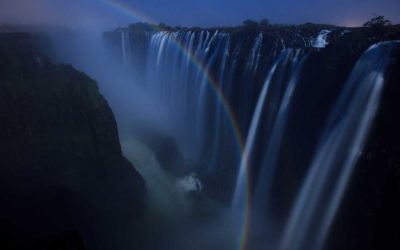Table of Contents
Victoria Falls and its discovery
You may have heard about Victoria Falls before, but who discovered it? The first European to see the waterfalls was David Livingstone, a Scottish missionary in the 19th century.
In 1855, the falls were named for Queen Victoria, but it wasn’t until David Livingstone’s work that the falls became known to the public. Since the mid-20th century, Victoria Falls has become an important source of tourism in the area.
In the future, climate change is likely to change the character of the Falls.
David Livingstone
David Livingstone was an African explorer who visited the Zambezi River in 1855. He was the first European to see the Mosi-oa-Tunya waterfall and renamed it Victoria Falls after Queen Victoria. Livingstone was a pioneer of European exploration in Africa, paving the way for trade in central Africa. His motto was Christianity, commerce, and civilization. To reach these ends, Livingstone believed that navigation along the Zambezi River was the key.
Livingstone and his companion, John Kirk, traveled the upper Zambezi river to its mouth, then paddled across the river to an island he named Livingstone Island. Livingstone was impressed by the Ngonye Falls, so he gave them the English name, Victoria Falls. This legend spread all over the world and is still revered today. Livingstone and Victoria spent several years living in the area. While living in the area, Livingstone studied the Victoria Falls in the Zambian side of the river.
The waterfalls were a place of great importance to the local tribes before the first Europeans reached the area. The area was home to the Bantu and Khoisan people. The southern Tonga called them Shungu na mutitima, while the Matabele and Batswana named them Mosi-o-Tunya. Nicolas de Fer’s 1715 map marked trade routes through the region.
The area became a major mission field for Livingstone. He spent 15 years there and developed his missionary zeal by establishing his own missions. In the northern part of the area, he became the first missionary to establish a church. This mission was the northernmost in southern Africa. The Bakwena chief became his only religious convert. Livingstone’s first visit to the area would be his first opportunity to teach Africans the importance of education.
Mosi-oa-Tunya
The area surrounding the Falls is known as Mosi-oa-Tunyu, and its national park is 66 square kilometres (16,309 acres). The park is also bordered by the Zambezi River, which stretches 40 kilometers (25 miles) west. While the two parks are separated by the river, most animals in Zambia remain confined within the park. Most of the animals are lodged here, though some roam freely.
The Mosi-oa-Tunyu National Park is managed by the Zambian Wildlife Authority, and the Maramba District Council manages the land. The Department of National Parks and Wildlife Management (Zambwa DNPWM) oversees the park’s other protected areas. The National Heritage Conservation Commission looks after the six Monuments in the park. The guiding objective of the park is to protect the area around the falls in its natural state. The area is protected by four Zimbabwean laws against hunting, and the park’s laws against the destruction of geological features.
When visiting Zambia, visitors should plan a trip to the national park. The Zambian side of the falls is home to the Mosi-oa-Tunya National Park, which straddles the river from the north bank all the way to Kandahar Island. The northern portion of the park includes the Dambwa Forest Reserve. The park also encompasses the Batoko Gorge, six kilometers above the falls. It also adjoins the town of Victoria Falls on the west bank.
The Falls were occupied by humans as far back as the Middle Stone Age. The Matabele, Makololo, and Batswana tribes lived around the area, but there was little information about the falls outside of its region. Until 1905, European visitors were few and far between. However, a bridge was built in 1905, which opened the way to the falls for European travel.
Origin
The first Europeans arrived at the Victoria Falls around 1900 in a reaction to the British South Africa Company’s desire for mineral rights. The area around the falls is rich in natural resources, and the British built a railway through it in 1905. The train provided an easy way to travel from as far away as the Cape and Belgium. Today, the Victoria Falls are visited by tourists from around the world. The attraction is not only popular for its magnificent waterfalls, but it is also a popular destination for rafting, hiking, and sunset cruises.
The Falls are famous for their beauty and the history of them can be delved into by reading the myths associated with them. Indigenous people in the region believed that thunder was caused by evil spirits and therefore they attempted to calm them with jewellery. It is not known whether or not the indigenous people of the area believed in the myths surrounding the waterfalls. The first European to view the Victoria Falls was the Scottish missionary David Livingstone, and he named the waterfall after him. The indigenous language name for the falls is Mosi-oa-Tunya, which means “The Smoke That Thunders.” Another, older name for the falls is Seongo, which was also coined because of the spray the waterfall produces.
First European to see Victoria Falls
The first European to see Victoria Falls was explorer David Livingstone, who came to the area in 1855. He named the falls Mosi-oa-Tunya, which means “Thundering smoke.” The local Lozi tribe had used a different name for the waterfalls until the nineteenth century, when they changed their name to Victoria. Archeological sites in the area indicate that people had lived in the region for at least three million years prior to David Livingstone’s visit.
David Livingston, a Scottish explorer, was the first European to witness the falls. Livingstone named them after Queen Victoria. The falls remained undiscovered for nearly fifty years until the opening of a railway across the Zambezi River in 1905. Since then, Livingston has become a popular tourist destination, though it still contains a small cemetery. It is now the site of a cemetery and a museum.
David Livingstone is often credited as the first European to view the waterfall. He renamed the waterfall Victoria Falls in honor of Queen Victoria. Livingstone opened many routes across the continent and collected valuable information. Livingstone was a proponent of trade and development in central Africa. His motto was “Christianity, Commerce, and Civilization,” and he believed that navigation of the Zambezi River would help him achieve his goals.
After the Falls were completed, the bridge opened up the area to tourism. It was commissioned by Cecil John Rhodes as part of his ambitious “Cape to Cairo” project. Though he died before the bridge was completed, the bridge opened the area to the Belgian Congo and Cape Town. The bridge opened up the area to the rest of the world. Tourism in the area increased, with over 300,000 visitors arriving each year.
David Livingstone’s journey to discover Victoria Falls
The history of Victoria Falls can be traced back to the 18th century, when the British explorer David Livingstone set out to explore the interior of Africa. His expedition was the first time a European saw the waterfall that is now known as Victoria Falls, which he named after Queen Victoria. His original purpose for crossing Africa was to establish trade routes throughout the continent. He believed that the Zambezi River would serve as a key to achieving his goals.
Despite being a non-conformist in his faith, David Livingstone became a member of an independent Christian congregation after becoming a man. These experiences gave him the right mind-set and body characteristics to succeed in his African work. Livingstone’s journey to discover Victoria Falls has inspired many people, from James Stewart to Stanley. Livingstone left a lasting impression on Africa, where he hoped to create a better society.
His expedition continues as he leaves the Zambezi River. They cross into modern-day Zambia. The journey takes three months to reach Tete. On his return, he meets with local chiefs, who want to charge him to cross the rivers. Livingstone’s journey to Victoria Falls is a fascinating story, highlighting how one man’s dreams can shape the lives of millions of people.
Following the discovery of the falls, Livingstone pushed north, discovering the area around Lake Mweru and Lake Bangweulu. He refused to return to England, and stayed in Africa until his mission was completed. He replenished his supplies and continued his journey toward the northern shore of Lake Bangweulu. While he was in Africa, he became weakened from dysentery and could no longer walk.
Victoria Falls, Zimbabwe
Initially, David Livingstone was the first European to visit the falls. In 1860, he was joined by John Kirk. He also visited the site with Portuguese explorers. Emil Holub, a Czech explorer, visited the area and created the first detailed map of the area. Thomas Baines painted the first pictures of the falls, and Anglo traders began arriving. He built a rustic settlement along the riverbank, which he named Old Drift.
The original waterfall was named after the scientist who first saw it. He was so amazed that he whispered to others that it was the dust of angels. He later added God save the Queen, which led to the name being changed to Victoria Falls in England. The name of the falls was changed after his death. He had no idea that he had discovered the waterfall. However, he did not know what to call it at first, and so he became the only person to name the waterfall Victoria.
Livingstone and his team were the first Europeans to reach the falls. He was the first European to visit the area, and the only European to ever do so. The Falls are the most famous part of Africa. Among the many other things he did in the country, he discovered Victoria in 1855. The two men had been a couple of years apart, but their friendship and respect for each other continued to last. The resulting view of the water was spectacular, and they made it their home.
The Falls were discovered by Livingstone in 1855. However, some historians disagree that he was the first European to see the falls. Various reports suggest that Livingstone had known about the Falls for several years before his arrival. Nevertheless, he did not claim to be the first European to have seen the waterfall. The fact remains that he was the first European to discover the falls. Then, he published an account of his visit to the waterfalls in 1851.
There are two names associated with the falls. The first European to see the falls was David Livingston in 1855. He also named it Mosi-oa-Tunya, which means “Thundering smoke.” The local Lozi tribe had a different name for the falls until the 19th century. Archaeological sites in the area show that people lived in the area for at least three million years. Interestingly, Livingston also gave the name Victoria to the falls after his death.
Livingston was the first European to discover the falls in 1855. He had heard about them four years earlier, but did not travel to the area. In 1855, David Livingston, a missionary from Scotland, had the first European to witness the falls. William Cotton had previously heard of the falls 130 km to the west. The waterfall was the only European to reach the falls by train. He was able to cross the Zambezi River and later wrote a book about the experience.

